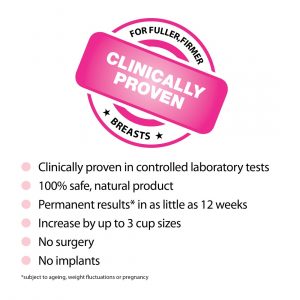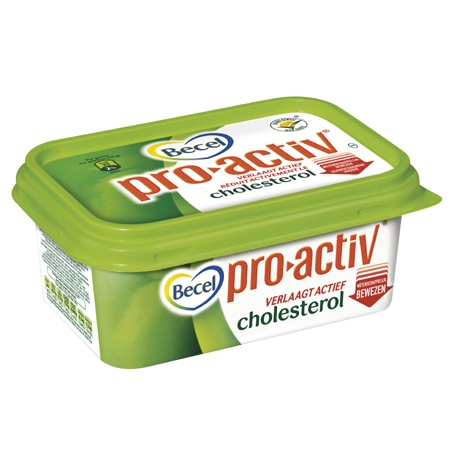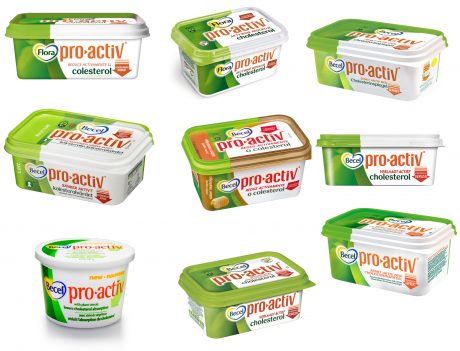
The idea came from lorry drivers who regularly visited southern and eastern Europe. They were struck by the beauty of local women, and especially taken aback by their breast sizes. So the “Erdic Original” breast growth pill was born, filled with hop, the apparent key dietary difference between large-chested southern and eastern European women and everyone else (Scholtens 1997). The complete programme will set you back €540: a bargain.[1]
What is it about this offer that makes us question its credibility? Why do we consider some claims as more credible than others? Which elements characterize the credible claim and what infrastructure supports the engineering of credibility for those who produce and sell food? Here, we briefly present two claims and trace how their credibility was established to illustrate the infrastructure hosting the labor and resources that build and maintain (or demolish) credibility. We restrict ourselves to a single sustainability claim and a single health claim, and refer to Flipse and Penders (2012) and Penders and Nelis (2011) for more detailed accounts.
We first discuss the claim that biological production of succinic acid is more sustainable than petrochemical production, and then move towards the claim that margarine fortified with phytosterols lowers cholesterol. While both exist in different realms, we will argue that they share a similar path through the “infrastructure of credibility.”
Credibly Green
The Dutch multinational life sciences and materials company Royal DSM N.V. develops a “greener,” sustainable alternative for petrochemically produced succinic acid, which can be used as a food preservative or as a component in bioplastics. In contrast to the margarine example that follows, the users of DSM’s products are not individual consumers, but companies who process these products into other products, ranging from foods to plastics. As such, the development of DSM’s sustainability-related claims take place beyond the consumer’s gaze. Sustainability claims are made legible through percentages of reduction of used resources or produced waste involved in the development of new products, using prospective product life cycle assessments (LCAs).
Sustainability is a self-identified priority for the company, based upon the requests and demands of its customers and its prominence in DSM’s mission statement. DSM produces ingredients; if its customers use these ingredients to produce products marketed as “green” or “sustainable,” they require or demand support for that claim. To that end, DSM studies the environmental footprint of its products, and mobilizes the results of those footprint studies in marketing claims, for the benefit of selling the product: succinic acid, in this case.
The main tool deployed to develop credible sustainability claims on greener products is the prospective LCA. It is an analysis meant to display quantitatively what will be the full impact of a production process on the environment. Simply put, this entails calculating every single step of the process into kilograms of carbon dioxide produced, capturing only ecological and environmental definitions of sustainability and leaving social and economic sustainability aside for the moment. The scientists involved present these numbers in literature and conferences, often in percentages of reduced carbon dioxide, liters of wastewater, and kilowatt-hours of energy. For the benefit of credibility, numbers are presented as transparently as possible, so everyone can check the calculations.
Making a prospective LCA is, however, easier said than done. When a novel production process is being developed, such as the biological production of succinic acid, its characteristics are not fully known. Pioneering such a new production process requires a high-quality LCA. However, for an LCA to be complete, details of that process are required. This presents DSM’s scientists with four practical problems.
First, location determines the content of the LCA, and this location is still unknown upfront. Producing succinic acid in Brazil could mean using sugar cane, energy generated by water power, and a transport sector running on bioethanol. A location in China could mean using less energy-rich rice, energy from coal power, and transportation based on outdated diesel engines. Second, calculating carbon dioxide production is difficult: scientists don’t know how much energy will be used, how much transportation will be required, and which raw material will be used. Working around these obstacles requires developing multiple scenarios, each with their own LCA. The way these scenarios are built and calculated, and the way these are perceived by higher-level management, determine the actual location of production and all the consequences of this choice. LCA, this way, is used to produce credibility internal to DSM, which is in line with the arguments of Freidberg (see this issue). LCAs thus compete with economic planning studies and scenarios for influence in business decisions. Those decisions, in turn, influence the selection of scenarios used in the LCAs.
Third, new problems arise when comparing the prospective LCAs of biological production with the current LCA of the petrochemical production of succinic acid. Petrochemical production has been around for half a century and has been optimized so much in that time that it is not always clear whether biological production processes can compete with those established methods. Scenarios exist in which the biological production route of succinic acid results can yield an inferior LCA compared with the petrochemical alternative. Thus, the fourth reason why making prospective LCAs is difficult arises: the rules for properly performing an LCA are not always clear. As a result, comparing LCAs performed by different companies or institutes is difficult and uninformative. Furthermore, where does the LCA of the ingredient end and that of the product begin? Does transport of the ingredient towards the customer belong to DSM’s LCA or to the customer’s LCA?
Ultimately, the LCA will be mobilized in marketing. Some quantification of sustainability will be produced. However, because of these uncertainties, complexities, controversies, and disputes over what an LCA is or ought to be, that number will not automatically be credible inside the company or outside of it. In addition, the sustainability claim’s origin matters: corporate claims tend to be judged critically. The credibility of DSM’s LCAs needs support.

Another “sustainable chemical company.” From SEC Filing, Registration No. 333 – 177917.
That support is offered in the form of an independent referee, judging and validating LCAs of all types. An example of a Dutch agency doing this type of work is the Copernicus Institute for Sustainable Development, connected to Utrecht University. This institute independently vetted DSM’s prospective LCA calculations. In this particular case, their results were quite similar to DSM’s, supporting the validity of DSM’s own calculations.
By highlighting this similarity, not only does the quantification gain credibility, but the trustworthiness of the claimant also is supported. The independently verified and approved values are (partially) decoupled from their interested origins and made legible and visible to potential purchasers of DSM’s ingredients through a marketing campaign focused on quantifiers and offering prospective purchasers draft versions of sustainability claims of their own. As a result, DSM performs a significant part of the credibility engineering for their customers’ claims. They are selling food and bioplastic ingredients as well as marketing ingredients, and they come as a package deal.
Credibly Healthy
The LCA is a desired marketing tool, since it suggests objective comparability and quality. It is a simple number in which trust can be invested (Porter 1996) because it appears stripped from political and commercial narratives of persuasion. Yet that apparent stripping takes work: work that requires outside help. Similarly, health claims are not credible by default. Let us take a quick look at Unilever’s “lowering cholesterol” claim about Flora proActiv margarine, and how it was made credible to food scientists, regulators, and potential consumers.
Scientists working in the food industry publish scores of scientific papers annually. They do so to strengthen their reputation in research, attract new scientists to their labs, and build prestige with partners, but also to disseminate data and claims meant to accompany (future) products. The readers of those papers are peer scientists, experts in food science, and often promising and desired collaborators. However, those peer scientists also perform another important role: they are the members of the expert panels invited by the European Food Safety Authority (EFSA) to judge health claims.
Health claims are strictly regulated in Europe. EFSA invites its panel to issue a scientific opinion based upon the evidence presented by the applicant. This opinion is subsequently handed to European regulators to inform their policy decision. In practice, regulators tend to follow EFSA’s scientific opinions, thus making it extremely valuable to food industry companies applying for permission to use a health claim.
Recently, such a panel of scientists judged the validity of “Question No. EFSA-Q-2008-085.” The question was presented by Unilever and dealt with the effects of plant sterols on human cholesterol levels. The company proposed three formulations for its claim, one of which was “Plant sterols have been proven to lower/reduce blood cholesterol significantly. Blood cholesterol lowering has been proven to reduce the risk of (coronary) heart disease.” The EFSA panel decided that none of the options was fully correct and decided that a different wording “reflects the scientific evidence” better: “Plant sterols have been shown to lower/reduce blood cholesterol. Blood cholesterol lowering may reduce the risk of (coronary) heart disease” (EFSA 2008:9). EFSA’s scientists decided that the absence of human intervention studies warranted this reformulation.
Just like the Copernicus Institute, EFSA acts as a referee and provides legitimacy and credibility for specific claims, but also for the claimant, which was Unilever in this case. In DSM’s case, their customers are other businesses, populated by experts. To Unilever, however, customers are consumers scattered around the globe. The quality of scientific dossiers presented to an institution like EFSA is largely inaccessible to them, despite EFSA’s efforts to communicate its decisions widely.
In other words, doing science, collecting evidence, and getting approval from EFSA generate credibility for scientists. Credibility for scientists, in this case, is only a means to build credibility with consumers, for they will have to make the purchase. However, mainstream food science is not particularly successful at establishing public credibility. Those who are winning in the public dietary credibility market are authors like Atkins or Agaston, who use case studies and stories rather than universal and scientific data (Shapin 2007). Flora proActive’s marketers used the very same strategy in their advertising campaign. Unilever introduced the consumer to Karin Bloemen, a 50-year-old Dutch singer and comedian who learns, in a 20-second-long commercial, that during menopause her cholesterol levels rose. In a second commercial, she tries—to her satisfaction—Flora proActive, and lowers her cholesterol.[2]
These commercials are technologies of persuasion and credibility, crafting specific connections. In the first commercial, the issue of high cholesterol was connected to women in menopause, thus linking an issue to a specific public. In the second commercial, the issue and public are then connected to the food product. A decent spread of cases, each with its own spokesperson, makes a metaphorical extension possible from Karin Bloemen to ourselves, and thus to every European consumer.
These brief commercials contain scientific claims, as does Flora proActive’s packaging. These claims are permitted by EFSA, but scientific claims alone cannot build consumer credibility. Unilever needs Karin at least as much as its EFSA-approved numbers and figures.
Building credibility for sustainability and health claims is a complex endeavor requiring the participation of diverse individuals and institutions. It is a process in which science, regulation, and the market merge, and all institutions have their part to play. Fluid and unfinished claims are important within institutions to provide direction, priority, and to force decisions, as in the case with the LCAs at DSM. Validation of claims by independent “other” institutions, whether it be the Copernicus Institute or EFSA, solidifies fluid claims. It provides a formal regulatory or slightly less formal yet legitimate foundation for further actions: sales, distribution, and even storytelling. The narrative credibility building toward consumers also requires the involvement of key institutions—in this case celebrities—thereby joining fame and fact in the act of selling a tub of margarine to the public.
All of the above displays an infrastructure to support, compare, relate, and enable the act of building credibility. It shows a material and social infrastructure that stars people, tools, materials, and institutions, all geared toward one thing: translating uncertainties into credibilities.

